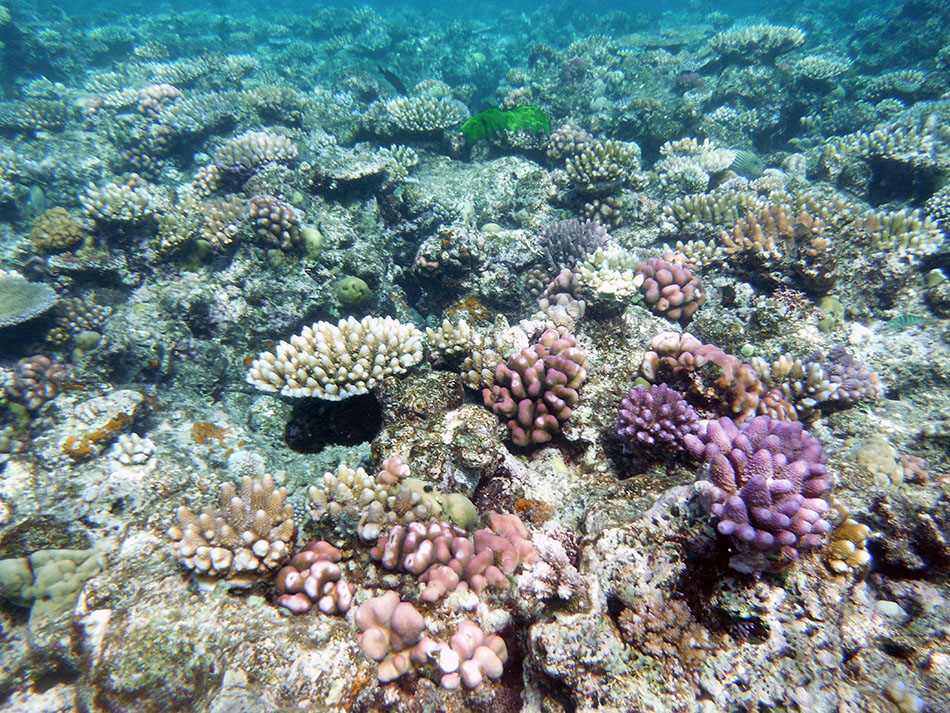
Coral reefs cannot seem to catch a break this year. Between a particularly strong El Niño, ocean acidification and increasing ocean temperatures, links between overfishing and reef collapses, and the declaration of a massive coral bleaching event expected to affect 95 percent of U.S. coral reefs by the end of the year, the current state of the global environment has been particularly detrimental to coral reefs.
And now, research has shown that a chemical found in almost every chemical-based sunscreen used in the United States is linked to coral destruction.
The study, published Tuesday in the Archives of Environmental Contamination and Toxicology, was led by Craig Downs from the Haereticus Environmental Laboratory in Virginia. He told Reuters that the research was conducted in order to help explain why baby corals have not been developing in many established reefs.
Researchers conducted the study in the U.S. Virgin Islands and Hawaii — areas that attract large amounts of tourists each year to swim in reef areas. They found that the chemical oxybenzone affects coral in three different ways: it alters its DNA, makes coral susceptible to potentially fatal bleaching, and acts as an endocrine disruptor, which causes baby coral to encase itself in its own skeleton and leads to its death.
To make things worse, it does not take a large amount of this chemical to upset coral. According to the research, concentrations of oxybenzone as low as 62 parts per trillion — equivalent to a drop of water in six and a half Olympic-sized swimming pools — are deemed harmful.
Between 6,000 and 14,000 tons of sunscreen lotion make their way into coral reef areas each year, and much of that sunscreen contains oxybenzone. The Huffington Post reported that the chemical is used in more than 3,500 sunscreens worldwide. However, harmful chemicals can also find their way into oceans through sewer systems and sewer overflows. The Washington Post reported that cities including Ocean City, Maryland, and Fort Lauderdale, Florida, have built sewer outfalls that send waste water away from public beaches and deep into the ocean with an assortment of toxic chemicals from personal care products like sunscreen.
This study is the latest to examine sunscreen’s impact on corals, but previous research has also found that sunscreen is a danger to corals. Conservation and environmental protection organizations have advised people to be mindful of the personal care products they use, especially while swimming in oceans. The National Park Service reported that 90 percent of snorkeling and diving occurs on only 10 percent of the world’s reefs, making the most “popular reefs” the most susceptible to harmful chemicals from sunscreens. Though no sunscreen has been named completely “reef friendly,” mineral and children’s sunscreens are found to be less harmful for reefs.
The human health effects of oxybenzone, along with other chemicals found in the vast majority of sunscreens, have been called into question by the Environmental Working Group (EWG) in previous years. The group has found that oxybenzone penetrates the skin, gets into the bloodstream, and acts as an endocrine disruptor, much like it has been found to do in coral reefs. EWG states that concentrations of oxybenzone are linked to disorders such as endometriosis in older women and lower birth weights in newborn girls — but the group notes that the studies showing this link aren’t conclusive.
Some dermatologists at organizations such as the Skin Cancer Foundation have been critical of EWG’s findings. Some have said the group’s work “lacks scientific rigor,” and that the sunscreen rating system is “arbitrary and without basis in any accepted scientific standard.” According to Reuters, the American Academy of Dermatology says there is no data showing oxybenzone as a health hazard. EWG has noted that more research must be done in order to gain a better understanding of the chemical.
There is no debate, however, that the ocean’s coral reefs are under significant amounts of stress from multiple factors. Though coral reef ecosystems make up just 0.1 percent of ocean area, nearly a quarter of all marine species depend on them to survive and rely on their habitat. Mark Eakin, NOAA’s Coral Reef Watch coordinator, recently told ThinkProgress about the potential detrimental global effects of a mass coral bleaching event, indicating that nearly half a billion people around the world rely on coral reefs and fisheries to survive and over $30 billion in income is at stake.